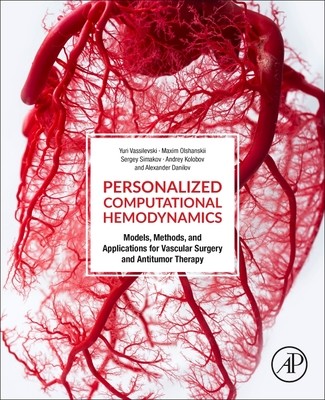
- We will send in 10–14 business days.
- Author: Yuri Vassilevski
- Publisher: Academic Press
- ISBN-10: 0128156538
- ISBN-13: 9780128156537
- Format: 19.1 x 23.5 x 1.5 cm, softcover
- Language: English
- SAVE -10% with code: EXTRA
Reviews
Description
Personalized Computational Hemodynamics: Models, Methods, and Applications for Vascular Surgery and Antitumor Therapy offers practices and advances surrounding the multiscale modeling of hemodynamics and their personalization with conventional clinical data. Focusing on three physiological disciplines, readers will learn how to derive a suitable mathematical model and personalize its parameters to account for pathologies and diseases. Written by leading experts, this book mirrors the top trends in mathematical modeling with clinical applications. In addition, the book features the major results of the "Research group in simulation of blood flow and vascular pathologies" at the Institute of Numerical Mathematics of the Russian Academy of Sciences.
Two important features distinguish this book from other monographs on numerical methods for biomedical applications. First, the variety of medical disciplines targeted by the mathematical modeling and computer simulations, including cardiology, vascular neurology and oncology. Second, for all mathematical models, the authors consider extensions and parameter tuning that account for vascular pathologies.
EXTRA 10 % discount with code: EXTRA
The promotion ends in 17d.14:16:09
The discount code is valid when purchasing from 10 €. Discounts do not stack.
- Author: Yuri Vassilevski
- Publisher: Academic Press
- ISBN-10: 0128156538
- ISBN-13: 9780128156537
- Format: 19.1 x 23.5 x 1.5 cm, softcover
- Language: English English
Personalized Computational Hemodynamics: Models, Methods, and Applications for Vascular Surgery and Antitumor Therapy offers practices and advances surrounding the multiscale modeling of hemodynamics and their personalization with conventional clinical data. Focusing on three physiological disciplines, readers will learn how to derive a suitable mathematical model and personalize its parameters to account for pathologies and diseases. Written by leading experts, this book mirrors the top trends in mathematical modeling with clinical applications. In addition, the book features the major results of the "Research group in simulation of blood flow and vascular pathologies" at the Institute of Numerical Mathematics of the Russian Academy of Sciences.
Two important features distinguish this book from other monographs on numerical methods for biomedical applications. First, the variety of medical disciplines targeted by the mathematical modeling and computer simulations, including cardiology, vascular neurology and oncology. Second, for all mathematical models, the authors consider extensions and parameter tuning that account for vascular pathologies.


Reviews